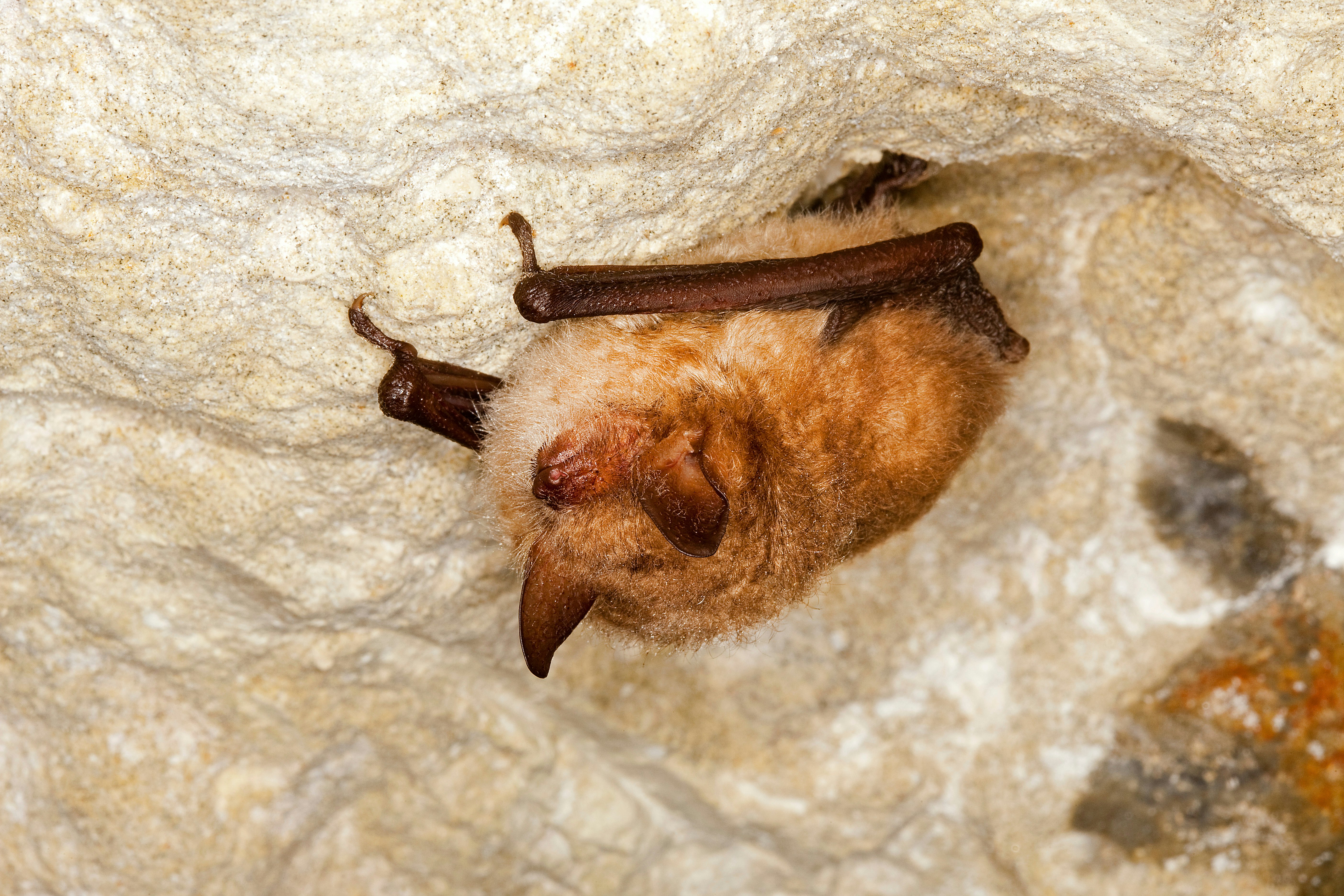
Bats are the most metal mammals. They shriek to eat their live prey, they sleep upside-down, some of them subsist on animal blood. Even heavy metal icon Ozzy Osbourne bit the head off a live bat onstage.
Bats are also renowned for their poor eyesight and stellar echolocation. They emit ultrasonic calls and use the sound waves’ echoes to gauge where their insect prey may be located. While bat calls can reach surprising heights, their lower register is equally impressive. In fact, bats have the largest vocal range of any mammal, and one species can vocalize between 1 kilohertz (kHz) and 120 kHz — a seven-octave range. Most human voices span only three octaves.
Now, a study from the University of Southern Denmark published today in the journal PLOS Biology explores the reason why bats can produce both low- and high- pitched sounds. For the first time, researchers have caught on video — at up to 250,000 frames per second — how the bat larynx functions to create these vastly different sounds, and when they come in handy.
What’s new — This study began as a foray into bat echolocation, but serendipitously led to a more complex discovery. This study examined five larynxes from Daubenton’s bats (Myotis daubentonii — named for the 18th-century French naturalist Louis-Jean-Marie Daubenton) and real-time reactions from live Daubenton’s bats. While these winged mammals produce shrill pitches for echolocation — to find their prey via sound waves — they can also produce low growls for what are known as “agonistic social calls,” which signal distress or discomfort to other bats.
For the first time, researchers have photographic proof of the distinct laryngeal structures that create the echolocation squeals and death-metal growls. This research is based on a decades-old hypothesis from biologist Thomas Griffiths. Griffiths served as a biology professor at Illinois Wesleyan University. In 1978, he published a paper in the Journal of Mammology proposing the dual structures in bat larynxes to make different sounds.
“The fact that we also found how they produce agonistic calls was a surprising and very welcome additional finding,” first author Jonas Haakansson tells Inverse. While he completed this research as a postdoctoral researcher at the University of Southern Denmark, Haakansson is now a postdoctoral associate at the University of Colorado, Colorado Springs.
The team ran fast-moving air through the excised larynxes to see exactly how they move, but also experimented with live bats to provoke vocal responses to different situations. Haakansson says the team prodded the bats gently with a paintbrush to elicit the agonistic call, which sounds like a croak.
The thing is, this croak is akin to the guttural wails that death metal singers are pros at. This sound also is a part of Mongolian throat singing.
Why it matters — The supervising author and lab leader, Coen Elemans, is obsessed with all kinds of animal sounds and the anatomical structures that blast them out, Haakansson says. So when Elemans had the opportunity to tinker with five larynxes that had belonged to Daubenton’s bats, he and his team jumped on it.
The findings yield hard proof of the complexity behind bat sounds. While we knew of these sounds and their discrete purposes, this study solidifies the biology behind how they’re made.
What’s more, the purpose for high- and low-pitched calls are telling. High-pitched sound waves move much faster but travel shorter distances — ideal for quickly bouncing off nearby walls and prey for a quick attack. Low-pitched sound waves travel farther, so a distressed bat can more easily reach his friends with a grunt.
“That’s two opposing evolutionary requirements,” Haakansson says. The fact that some bats evolved these anatomical features to cover more than 100 kHz speaks to the need for both, and that each register fulfills a different need. Haakansson says that bats have not been observed to produce sounds at a mid-range — say, 50 kHz — and that they tend to either make very high or very low vocalizations.
Digging into the details — In the Daubenton’s bat larynx, there are vocal folds and vocal membranes. Vocal membranes are extremely thin and low-mass while vocal folds are more massive.
Vocal folds are also known as “false” vocal folds because they had been thought to not produce any sound. “Their function was thought to mainly be to protect and lubricate the vocal folds,” Haakansson says. While this notion has been debunked for awhile, the team caught on camera how these folds and membranes functioned differently.
The “false” vocal folds produce the death-metal agonistic calls. While the folds oscillated, the vocal membranes didn’t move. On the other hand, when simulating echolocation through the larynx, the vocal membranes vibrated while the folds remained still. The membranes are so thin that they’re able to produce the ultrasonic frequencies that bats are famous for.
This finding extends to bats with similar communication styles, using low croaks and high squeaks for socializing and hunting. Still, other species of bats communicate instead by hissing or clicking, like the hoary bat and the fruit bat, so it’s not applicable in all bat species.

What’s next — Future research depends on forthcoming generations of bat biologists. Now that Haakansson’s in Colorado, he’s focusing on bat flight. The Elemans lab may choose to pursue another mysterious sound for their next subject.
For now, one of nature’s many mysteries has been solved. “It just gives an explanation of something quite amazing,” Haakansson says. Who knows — maybe this finding will even help revolutionize the next generation of death metal.







